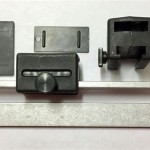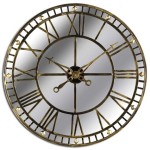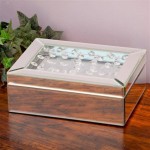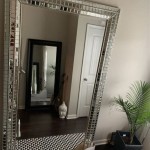What Is Mirror Image In Coordinate Geometry?
Mirror image in coordinate geometry refers to the reflection of a point or a shape across a line or a plane. This reflection creates a congruent image, meaning the original and the reflected image have the same size and shape, but their orientations are reversed. Understanding reflections is crucial for various geometrical applications, from basic transformations to more advanced concepts in computer graphics and physics.
Key Points about Mirror Images:
- Creates a congruent image.
- Reverses the orientation of the shape.
- Is a type of rigid transformation.
The process of finding the mirror image involves identifying the line or plane of reflection, often referred to as the mirror line or mirror plane. This line or plane acts as the axis of symmetry between the original figure and its reflection. Each point in the original figure has a corresponding point in the reflected image, equidistant from the mirror line or plane.
Key Points about the Reflection Process:
- Involves a line or plane of reflection.
- Corresponding points are equidistant from the mirror line/plane.
- The line connecting a point and its image is perpendicular to the mirror line/plane.
Reflecting a point across the x-axis changes the sign of its y-coordinate while keeping the x-coordinate the same. For example, the mirror image of point (x, y) across the x-axis is (x, -y). Conversely, reflecting a point across the y-axis changes the sign of its x-coordinate, resulting in (-x, y). These simple rules provide a foundation for understanding more complex reflections.
Key Points for Reflection across Axes:
- Reflection across x-axis: (x, y) becomes (x, -y).
- Reflection across y-axis: (x, y) becomes (-x, y).
Reflecting across lines other than the x and y axes requires a slightly more involved approach. Consider a line of reflection defined by the equation y = mx + c. To find the mirror image of a point (x₁, y₁) across this line, one method involves finding the equation of the line perpendicular to the mirror line and passing through (x₁, y₁). The intersection point of these two lines represents the midpoint between the original point and its reflection. Utilizing the midpoint formula, the coordinates of the reflected point can then be determined. Alternatively, specific formulas exist for reflection about the line y = x and y = -x.
Key Points for Reflection across Arbitrary Lines:
- Requires finding the equation of a perpendicular line.
- The intersection of the lines gives the midpoint between the original point and its image.
- The midpoint formula helps determine the reflected point's coordinates.
Reflection can also extend to two-dimensional shapes. Reflecting a polygon, for instance, involves reflecting each of its vertices across the line of reflection. Connecting these reflected vertices then forms the mirror image of the polygon. The properties of the reflected polygon, such as its area and perimeter, remain the same as the original polygon, further emphasizing the congruence between the original and reflected shapes.
Key Points for Reflecting Polygons:
- Reflect each vertex across the line of reflection.
- Connect the reflected vertices to form the image.
- Area and perimeter of the image remain unchanged.
The concept of mirror images finds broad applications in various fields. In computer graphics, reflections are used for creating realistic images and special effects. Understanding reflections is also crucial in fields like physics, particularly in optics, where it explains phenomena like the formation of images in mirrors and the behavior of light rays. Furthermore, the principles of reflection extend to three-dimensional space, with reflections occurring across planes rather than lines, playing a significant role in areas like crystallography and molecular modeling.
Key Applications of Mirror Images:
- Computer graphics
- Physics (Optics)
- Crystallography
- Molecular modeling
By grasping the underlying principles of mirror images in coordinate geometry, one can solve a variety of geometric problems and understand its relevance in diverse scientific and technological domains.

Mirror Image Of A Cordinate In Cartesian Plane About X Axis And Y

Reflection Definition In The Coordinate Plane

Reflection Definition In The Coordinate Plane

Find Mirror Image Of A Point In 2 D Plane Geeksforgeeks

Math Labs With Activity Obtain The Mirror Image Of A Given Geometrical Figure Plus Topper

Cbse Class 9 Maths Lab Manual Coordinate Geometry Sample Papers

How To Obtain Mirror Images Of Geometrical Figures 3 Diffe Using A Graph Paper Maths Coordinate Geometry 12645479 Meritnation Com

Math Labs With Activity Obtain The Mirror Image Of A Given Geometrical Figure Plus Topper

Draw The Mirror Image Of Rectangle And Triangle On X Axis Y In Coordinate Geometry Brainly
Lesson Explainer Reflections On The Coordinate Plane Nagwa








